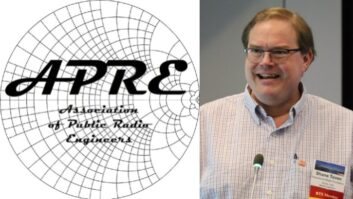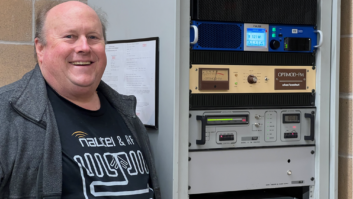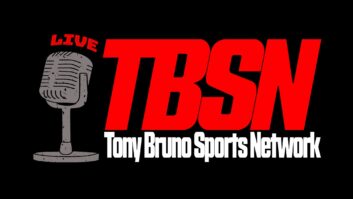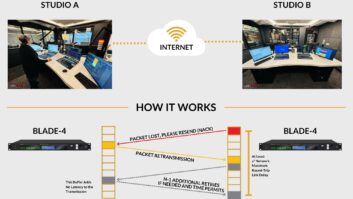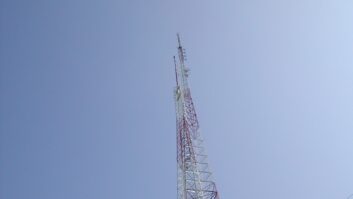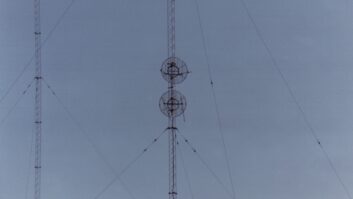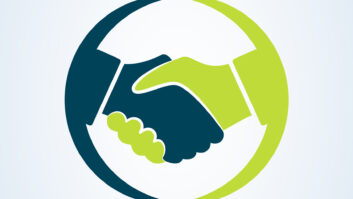
Credit: Images courtesy of Philip Mulivor If you had lived in the early 1920s, you probably would have known at least one family who sold their icebox or other household essential to raise money for a wireless set. Radio was miraculous and intoxicating, and people rushed to be among the first to experience the impossible.
Ironically, early broadcasters had little idea who, if anyone, was listening to their stations. The first AM broadcasters believed (correctly) that their nighttime signals reached huge tracts of the country and enveloped a quasi-national audience. But without Nielsen Audio or Facebook, stations could rely only on the occasional postal letter to gauge their far-flung listenership.
To help broadcasters understand their audiences and attract sponsors, the EKKO Company of Chicago whipped up a clever gimmick in 1924. They imprinted colorful stamps with call signs and sold them to the respective broadcasters; at the same time, they sold stamp albums to the public. The albums included a place for each station’s stamp and offered simple instructions for submitting reception reports. When a station received a report from a listener, it would return an attractive EKKO stamp, which the listener would mount in his official album.
The result was twofold: The first broadcast-band QSLs were born, and, as the EKKO stamp fad caught on, stations began to understand who was actually listening.
The EKKO Company chose the American Bank Note Company to print their stamps. Similar in size and quality to U.S. postage stamps, the intaglio-printed EKKOs featured a perched bald eagle flanked by two radio towers emitting stylized lightning bolts. In addition to a station’s call sign, each stamp bore the phrase “Verified Reception Stamp.”


During 1922 alone, the number of AM stations grew from 67 to more than 500, and President Warren G. Harding installed the first radio in the White House. By the mid-1920s, broadcast-band DXing was a rapidly growing pastime and EKKO stamp collecting had become wildly popular.
But not all DXers embraced EKKO stamps. Radio News magazine, a popular resource for radio hobbyists of the day, published a tongue-in-cheek article about the new fad in its February 1925 issue:

“Be sure you have the little old stamp before telling how the coast came in so loudly that you had to throw a sofa pillow over the phones to keep them from waking the baby,” chided the article. “The Society for the Prevention of Useless Falsehood in Radio will get you if you don’t watch out. Some stern-visaged individual is liable to step up, throw back his coat and make visible the badge of the society, and upon the authority of same, demand that you immediately show your stamp.”
While the article lampooned the stamp fad, the magazine’s cover paid homage to the early adopters of the EKKO Company’s scheme, featuring the colorful stamps of WTAM, WBT, WHO, KFKB and others.
One radio historian has counted more than 800 stations that participated in the EKKO stamp program during the 1920s, including broadcasters in Canada, Mexico and Cuba. The EKKO fad soon bred imitators, the most famous of which was the P.M. Bryant Company. Bryant sold both albums and stamps directly to the public. Once a station was heard, listeners needed only to paste the proper stamp into their albums; broadcasters were completely cut out of the process.
After the EKKO stamp hobby had taken hold, several stations opted to print their own, custom verification stamps. The EKKO Company often showed their displeasure by excluding those stations from subsequent editions of the EKKO album.
Before the EKKO stamp craze was extinguished by the Great Depression of the early 1930s, it’s likely that many tens of thousands of EKKO stamps were distributed throughout the United States. But where are they all today?

The few EKKO stamps that have survived are held in private collections or traded on eBay.
“At any one time, there’s maybe a dozen serious collectors,” said Bob Lucier, who has been buying and selling EKKO stamps on eBay for more than 10 years “They’re a fringe item for sure.”
Today, rarer EKKO stamps (from stations who distributed only a few) fetch several hundred dollars, while the more common call signs often can be purchased on eBay for $5 to $10. Large EKKO collections occasionally surface on eBay. Lucier purchased a half-full EKKO album for $4,700.
More than 90 years ago, tuning in an AM radio station located a few states away was a singular thrill. It was something difficult to believe, clearly worthy of a souvenir. For those of us born with the “radio gene,” nothing has changed — we’re still awestruck by wireless communication. For everyone else, there are still a few EKKO stamps around to help you remember the miracle.
Philip Mulivor, CBRE, AMD, teaches electronics technology at Remington College in Cleveland.





